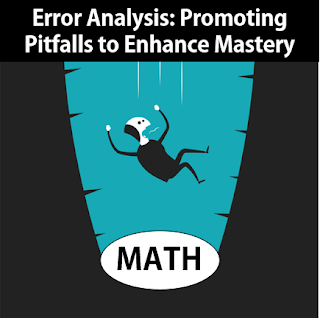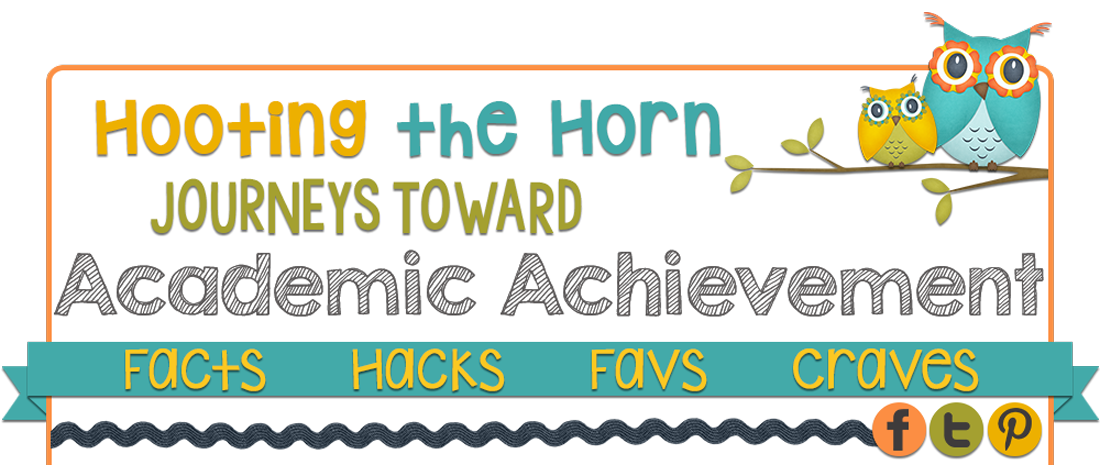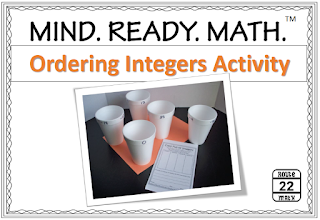Tuesday, July 19, 2016
Back to School Chat on Twitter
Here is our list for Route 22's special Back-to-School Chat on Twitter. Check back for more details or use #btschoolchat on Twitter.
Monday, July 18, 2016
Modeling Multiplication and Division with Watermelon Plates
 I live for classroom hacks! I enjoy discovering new ways to deliver math instruction. Recently, I found a fantastic package of watermelon plates at Wal-mart. I was attracted to the seeds in the middle of each plate. The seeds are great for counting in primary grades, but kids can also use them for lessons highlighting the importance of multiplying and dividing.
I live for classroom hacks! I enjoy discovering new ways to deliver math instruction. Recently, I found a fantastic package of watermelon plates at Wal-mart. I was attracted to the seeds in the middle of each plate. The seeds are great for counting in primary grades, but kids can also use them for lessons highlighting the importance of multiplying and dividing.Items Needed:
Watermelon plates
Counting Cards
Sharpies
Paper or Journal
Pencil
The Hook:
How can watermelons help us learn about multiplication and division?
After passing out plates to students, tell them you need to know how many seeds are "in the watermelons." Next, ask students "How can we find the total number of seeds?" Students can answer this question in journals or discuss possible responses with partners, small groups, or in a whole group format. Based on responses, extend the conversation by asking them to choose the fastest method.
Watermelon Work:
Distribute "counting cards." The cards should indicate the number of seeds students should group together. For example: "Circle groups of 3 seeds." Another option is the "A, B, C, D, E." Assign students groups based on the letter they call in a whole group format,
After students group seeds, ask them how the groupings can help them count faster. Students should be able to respond that they can count the number of groups and multiply by the number of seeds in each group. There may be seeds left over. Students can add the remaining seeds to the product. Make sure students write the multiplication expressions in their journals or worksheets. Extend this part of the lesson by allowing students to discuss how and why different groupings resulted in various multiplication expressions.
Wide Divide:
After students determine the number of watermelon seeds on each plate, discuss how the groupings also represent the inverse of multiplication (division). First, ask students how the groupings model division. Seek input and responses from students. The goal: students realize that the total number of seeds divided by the number of seeds in each group results in the quotient (the number of groupings created with a possible remainder).
Beyond the Plates:
Watermelon is healthy, nutritious, and TASTY! If possible, offer watermelon cubes or slices to bring a little bit of the "real-world" into this delicious summer math lesson.
Happy Hacking!
Monday, July 11, 2016
Error Analysis in Mathematics
 It will happen. Students will make mistakes when solving math inquiries. In the past, these errors were met with red ink and low grades, leaving generations of students feeling as if math was a bottomless pit they could never escape. Now, errors can serve as learning opportunities students can use to master mathematical concepts.
It will happen. Students will make mistakes when solving math inquiries. In the past, these errors were met with red ink and low grades, leaving generations of students feeling as if math was a bottomless pit they could never escape. Now, errors can serve as learning opportunities students can use to master mathematical concepts.Why error analysis?
Error analysis is the process of reviewing solutions to math inquiries, identifying mistakes, explaining why they were made, and making corrections. For example, if a student completes 20 problems focused on multiplying rational numbers, and two of the answers are incorrect, did the student make calculation errors or does the student have an issue understanding the proper algorithm? Would your response change if the student answers 15 out of 20 incorrectly?
While it is important for educators to understand the types of mistakes students make, there is a crucial element missing. Students also need to learn how to identify and correct mistakes. The most effective types of error analyses focus on 5 common mathematical errors: conceptual, operations, reading comprehension, procedural, and silly (EA CORPS).
Conceptual errors
Conceptual errors arise from the failure to recognize, understand, or connect math ideas and principles. Indicators of conceptual errors include errors based on definitions of math concepts or repeated procedural or calculation errors. A student who identifies a four-sided curved figure as a quadrilateral may not recognize that quadrilaterals are formed by four straight line segments. Conceptual errors are the hardest to address and require planning and consistent practice to overcome.
Operations errors
Operations errors - also called calculation errors - can be a major roadblock to students trying to master mathematics. Addition, subtraction, multiplication, and division are at the core of the subject, and mistakes here can cause major frustrations. Many times, operations errors are minor, and students can prevent them by checking their work and taking additional time when solving problems. Repeated operations errors may indicate issues with conceptual or procedural understanding.
Reading comprehension errors
Some would argue that math has become "reading comprehension with numbers." Indeed, mathematics is a language. Therefore, it should come as no surprise that reading comprehension is a major issue in error analysis. This type of error occurs when a student misreads or misunderstands the text. It can stem from a lack of focus, rushing, or the inability to analyze text. Students understand the basic concept and apply correct procedures. There are also no calculation errors. Review the example below:
There are 5 cars and 3 trucks in the parking lot. Write the ratio of trucks to cars in three different ways.
Jon's response: 5 to 3, 5 : 3, and 5 / 3
Jon's response shows that he understands the concepts of ratios and how to write them. Jon's mistake stems from failing to order the objects being compared based on the prompt. Students can avoid reading comprehension pitfalls by highlight key words, close reading, using context clues, and using graphic organizers.
Procedural errors
Procedural errors are mistakes in processes when solving math problems. Errors include incorrect operations, incorrect algorithms, and incorrect or missing steps. This type of error can manifest when students work with the order of operations, for example. Some students will perform multiplication before division and addition before subtraction despite the order of the operations (left to right). Procedural errors also arise when students learn "shortcuts" before understanding concepts. They rely on shortcuts and fail to develop the conceptual or procedural fluency needed to master concepts.
Silly errors
Silly errors are not really silly, but they are the easiest types of error to fix. Many silly error excuses are easy to identify:
"I ran out of time."
"I thought the answer was right."
"I changed my answer."
"I didn't pay attention."
There are two important ways students can combat silly errors: focus and confidence. Focusing on problems, one at a time, can alleviate problems caused by failing to pay attention. Practice builds confidence, which is needed when nervous guts tell students to change the answers, but clear minds know the first answer is correct.
Join the EA CORP!
We're looking for a multitude of great teachers and students who are ready to improve classroom environments by embracing mistakes and not condemning students for making them. There's nothing to sign and no phone calls to make. Just commit to using error analysis as a tool for growth in math classrooms. Want a way to get started? Download the guide students can use to analyze errors in class. It's perfect for back-to-school and useful all year round.
Click here for student error analysis guide.
Join the conversation on Twitter using #eaCORP.
Further reading:
Simple Activities can Help Reveal Students' Issues with Math Concepts
Is Reading Comprehension the Real Problem with Math?
Sunday, April 17, 2016
Test Prep Hack: Integer Activity Using Cups
 It is test prep season, and teachers and students everywhere are gearing up for those BIG tests by using questions and activities. Studies have shown that using a variety of methods for test prep keep students engaged and prevent them from reaching a plateau before test day. Since the stakes are high, alleviating stress and anxiety by incorporating games in a test prep environment is important.
It is test prep season, and teachers and students everywhere are gearing up for those BIG tests by using questions and activities. Studies have shown that using a variety of methods for test prep keep students engaged and prevent them from reaching a plateau before test day. Since the stakes are high, alleviating stress and anxiety by incorporating games in a test prep environment is important.Of course, games are fun, and saving money creating those games makes it even more fun. What if you could use 6 cups and 1 permanent marker to create an engaging lesson? What if I told you it is possible? (*Are you smiling yet?)
Cups Full of Integers
Cups Full of Integers is an activity I created to provide a challenge for students learning about comparing and ordering integers. It is simple to create. Basically, you stack 5 cups and then write integers in order the cups. You can choose greatest to least or least to greatest. Use the sixth cup as a guide to make sure your numbers are aligned.
Once you separate the cups, you have created a puzzler that, at first glance, seems simple to solve. Trust me, it is not as easy as it looks to order the cups correctly if you choose a good set of integers. Cups Full of Integers can be used as a station activity for test prep review. Consider making more than one set for the stations so that students can work together to solve the puzzler. Remind them to separate the cups and shuffle them so that the next group of students will have the same experience with the challenge.
This is a great activity for less than 50 cents!!!
If you are pressed for time, I created a version of the activity with a set of numbers to use and recording sheets. Click on the image for details.
Monday, February 15, 2016
Only Mice Like Useless Socks: The Power of Mnemonics

It's no secret that mnemonics can help people remember steps and processes in mathematics and other subjects. Many people have heard (and used) the mnemonics for the order of operations: PEMDAS and Please Excuse My Dear Aunt Sally. I've personally witnessed the power of mnemonics and their usefulness. They help make learning "sticky" and help calm students during testing situations.
Have your students had trouble with interquartile range? The concept was added to our sixth grade standards last year. Interquartile range is quite different from the simplicity of dot plots and bar graphs. It requires students to find the median of a set of data, the median of the lower half of the data, and the median of the upper half of the data. When I first introduced the concept to students, they had that classic "what?" look. I had to think of a way to help students remember how to find interquartile range.
I listed the steps for finding interquartile range, and the idea of mice and socks formed in my mind. A short time later, I wrote down the mnemonic "Only Mice Like Useless Socks."
Order the data from least to greatest
find the Median of the data
find the median of the Lower half of the data (Q1)
find the median of the Upper half of the data (Q3)
Subtract Q1 from Q3
The quirkiness of the mnemonic is perfect for middle school students. To "hook" them in, ask them how they think mice and socks can help them remember interquartile range. The responses you get will probably be hilarious, but the question and the responses add to the "stickiness" of the lesson. The mnemonic transformed a normally tricky lesson into one where students have a little fun. Maybe it will work for you as well.
Click here to download a copy of the worksheet I use to introduce interquartile range. It's available for FREE until Saturday, February 20, 2016.
Have a great week!!!
Tuesday, February 9, 2016
Classroom Hack: Think Outside the Box Plot
 Learning is Love...and I love classroom hacks! During a recent trip to the dollar store, I picked up some great finds for Valentine's Day. I've been thinking about how to help students better understand box plots and interquartile range. I like students to explore various ways to make learning "sticky." Once I found a bag of foam heart-shaped stickers, I hoped I could create an activity that would make box plots sticky for students.
Learning is Love...and I love classroom hacks! During a recent trip to the dollar store, I picked up some great finds for Valentine's Day. I've been thinking about how to help students better understand box plots and interquartile range. I like students to explore various ways to make learning "sticky." Once I found a bag of foam heart-shaped stickers, I hoped I could create an activity that would make box plots sticky for students. I always like to start off with a crazy question. For this lesson, I may ask students, "How can hearts help us learn about box plots?" At first glance, there is no obvious answer (one student did mention that we could display the data for heartbeats:. ;-)
 |
| 100 Hearts for $1. What a deal! |
Students will use the task cards to determine the median, first and third quartiles, and the upper and lower extremes. They will create a number line with the appropriate scale and intervals. Next, they will write the labels of the five summaries on the hearts. Now, they can construct their box plot using the stickers and the string.
What's great about this activity is that it's quick and simple. Plus, kids will have a little bit of fun while learning about or review box plots. Win-win for $1 plus tax. We can all love that!!!
Sunday, January 31, 2016
Learning to Love Hacks: Groundhog Day
 I'm celebrating "Learning is Love" this week with my fellow Texas teachers Lauren of Leaf and STEM Learning and Randi of Teaching in an Organized Mess. We want to share why we love learning, and we hope our love will bring inspiration to educators as we close out January 2016.
I'm celebrating "Learning is Love" this week with my fellow Texas teachers Lauren of Leaf and STEM Learning and Randi of Teaching in an Organized Mess. We want to share why we love learning, and we hope our love will bring inspiration to educators as we close out January 2016. Click Here to get this Groundhog Day Freebie on TPT!
If you have followed my blog long enough, you know that I'm addicted to shopping at dollar stores and finding materials that can spark a love of learning in students. My recent trip was no different; I found some plates and tape. I just had to find a groundhog. And I knew I couldn't dig for it. Instead, I found a wonderful set of groundhog images from Educlips on TPT.
My mission (and the mission of my students) is to create a sundial and take it outside to see if the groundhog can see its shadow. It's a great activity for elementary grades, but middle school students can benefit from it as well.
What shape is it?
First, students should cut the groundhog to size. I ask students to identify the shape of the cutout. Most students will immediately answer triangle. Prepare to ask them again, but tell them you want to know the shape of the entire cutout.
 |
| Hint: It's a trapezoid. :-) |
Find the area
Yep, break out those rulers. Once students identify the shape of the cutout, they'll need to find its area. What looks like a print out, a plate, and some tape is turning into a nice, engaging lesson. To facilitate this part of the lesson, students round measurements to the nearest half-inch (or half-centimeter).
Fold it up
After students find the area, I ask them to fold the shape along the dotted line. Now, there are two shapes. Students must identify them and find the area of those two shapes. Next, they'll reflect on the area of the first shape and the area of the two shapes.
Finally, the sundial
Never one to lose out on a chance to review, I'll ask students to identify the shape of the plate before marking the center. Students should place the plate face down. If you are working on circumference and area of circles in your classes, its a great time for students to review those concepts.
- After marking the center of the plate, students should write the numbers for their "clock" around the perimeter of the plate.
- Students can attach the groundhog to the center of the plate using tape. The groundhog should line up with the 12 and the 6.
- Take the plates outside (or to a well-lit room). Will the groundhog see its shadow?
- If you have an outside area or room that receives sunlight for an extended period of time, set of the groundhog sundial and observe how the shadow changes over time.
 |
| The plate before attaching groundhog |
Hopefully, you can use this quick and fun activity in your classroom this Tuesday. If you're looking for other blogs in our Learning to Love series, please check out Lauren's blog or Randi's blog.
Want to win a $25 TPT gift card? Click here to find out how!!!
What FREEBIES: Click here!
Tell the world what you love about learning on Twitter: #learningislove
Subscribe to:
Comments (Atom)









